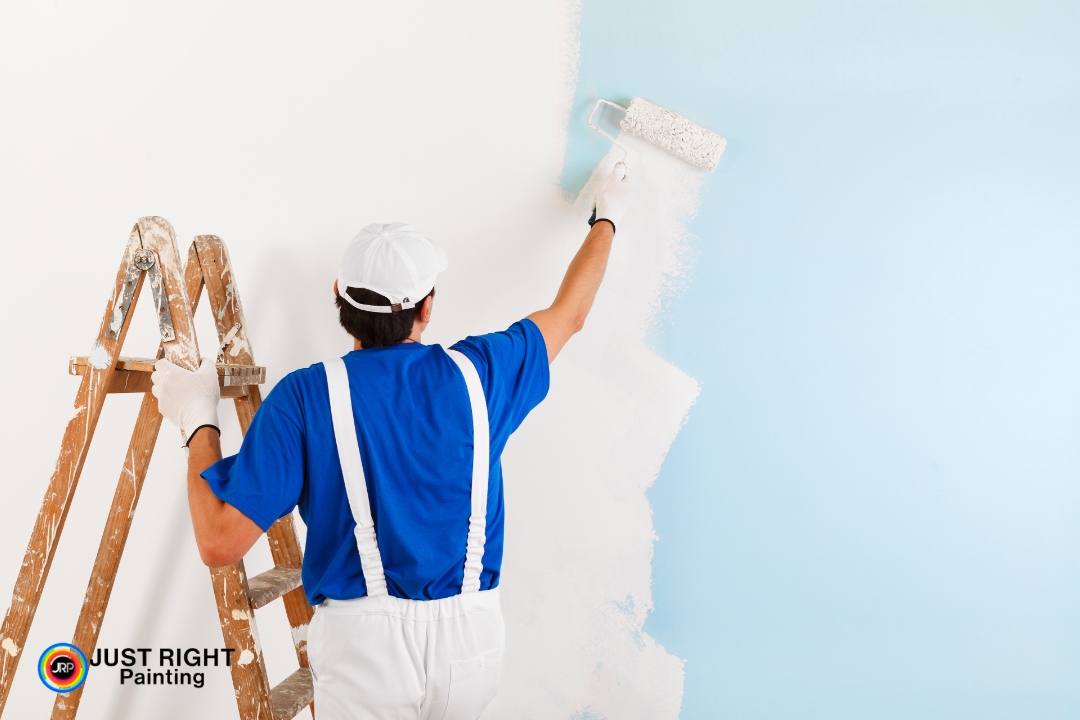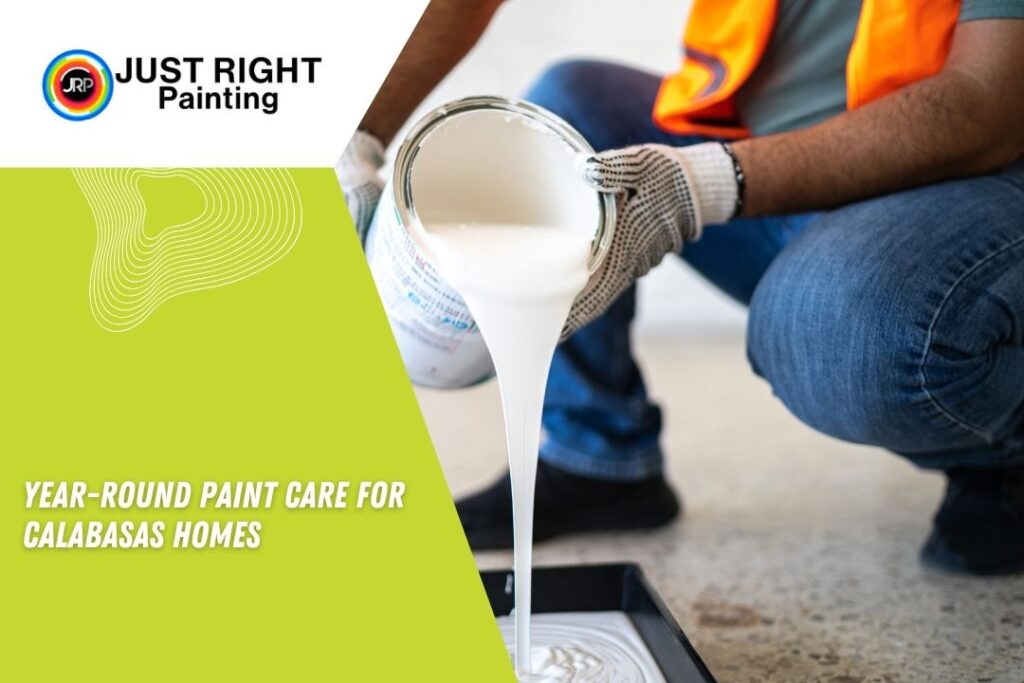Southern California’s unique climate brings both opportunities and challenges for homeowners looking to maintain their painted exteriors and interiors. The region’s abundant sunshine, occasional rain, and varying temperatures throughout the year require a strategic approach to paint maintenance. Understanding how to care for your painted surfaces across all four seasons can significantly extend the life of your paint job and keep your home looking its best. Paint Care for Calabasas Homes ensures your property remains beautiful year-round.

Proper seasonal maintenance not only preserves your home’s aesthetic appeal but also protects your investment. A well-maintained paint job can last 7-10 years or more, while neglected surfaces may require repainting in just 3-5 years. This guide will walk you through the specific maintenance tasks for each season, helping you develop a routine that keeps your painted surfaces in optimal condition year-round. Implementing Paint Care for Calabasas Homes can prevent costly repainting.
Whether you’ve recently completed residential painting in Calabasas or you’re maintaining an older paint job, following these seasonal guidelines will help you maximize the longevity and beauty of your home’s painted surfaces.
Spring: Fresh Start and Deep Clean
Spring marks the perfect time for comprehensive paint maintenance after the mild Calabasas winter. This season focuses on assessment, cleaning, and preparation for the warmer months ahead. Even small steps in Paint Care for Calabasas Homes make a big difference over time.
Thorough Exterior Inspection
Begin your spring maintenance with a detailed walk-around of your home’s exterior. Look for signs of paint failure, including peeling, cracking, chalking, or fading. Pay special attention to areas that receive direct sunlight, as these surfaces experience the most wear. Check trim work, window frames, and any painted wood surfaces for signs of moisture damage or pest activity.
Document any issues you find with photos and notes. This documentation will help you track problem areas over time and plan for necessary touch-ups or professional intervention.
Deep Cleaning Protocol
Spring cleaning extends beyond your home’s interior. Use a pressure washer or garden hose with a scrub brush to remove accumulated dirt, dust, and mildew from painted surfaces. For most painted exteriors, a mild detergent solution works effectively without damaging the paint film.
Start from the top and work downward, allowing each section to dry completely before moving to the next. Avoid high-pressure settings that might damage the paint or force water behind siding or trim.
Touch-Up Strategy
Address minor paint issues discovered during your inspection. Sand rough areas lightly, prime any bare spots, and apply matching paint to small chips or scratches. Keep a record of your paint colors and finishes to ensure proper matching for future touch-ups.
For larger areas of damage, consider scheduling professional residential painting services to ensure proper preparation and application techniques.
Summer: Protection and Prevention
Calabasas summers can be particularly harsh on painted surfaces, with intense UV radiation and high temperatures that can cause paint to fade, chalk, or deteriorate.
UV Protection Focus
Monitor painted surfaces for signs of UV damage throughout the summer months. South-facing walls typically show the first signs of fading or chalking. Consider applying a UV-protective clear coat to high-exposure areas if recommended by your paint manufacturer.
Trim back vegetation that has grown too close to painted surfaces, as plants can trap moisture and create conditions for paint failure. Maintain at least 12 inches of clearance between shrubs and painted siding or trim.
Ventilation and Moisture Control
Ensure adequate ventilation around your home’s painted surfaces. Check that gutters and downspouts direct water away from painted walls and foundations. Clean and maintain these drainage systems regularly to prevent water damage to painted surfaces.
Inspect and maintain caulking around windows, doors, and trim. Replace any cracked or missing caulk to prevent moisture infiltration that can lead to paint failure.
Interior Maintenance
Summer’s heat can affect interior painted surfaces as well. Maintain consistent indoor temperatures and humidity levels to prevent paint from expanding and contracting excessively. Use exhaust fans in bathrooms and kitchens to manage moisture levels that can damage painted walls and ceilings.
Fall: Preparation and Protection
Fall preparation focuses on protecting your painted surfaces from potential winter weather and preparing for the next year’s maintenance cycle.
Weather Preparation
Clean gutters and downspouts to ensure proper water drainage during winter rains. Check that all exterior caulking remains intact and weatherproof. Replace any degraded caulk before the rainy season arrives.
Inspect painted surfaces for any damage that occurred during the hot summer months. Address these issues before cooler, wetter weather can exacerbate problems.
Preventive Treatments
Apply protective treatments to high-wear areas such as exterior doors, window trim, and porch railings. These surfaces often require more frequent attention due to increased handling and weather exposure.
Consider applying a protective wax or sealant to painted surfaces that will be exposed to increased moisture during the winter months.
Planning Phase
Fall is an excellent time to plan for next year’s painting projects. Assess which areas may need professional attention and begin researching contractors if needed. Planning ahead allows you to schedule work during optimal weather conditions and often results in better pricing.
Winter: Monitoring and Gentle Care
Calabasas mild winters still require attention to painted surfaces, particularly during the region’s rainy season.
Rain Response Protocol
Monitor painted surfaces during and after rain events. Look for signs of water infiltration, staining, or damage. Address any issues promptly to prevent more extensive damage.
Check that exterior painted surfaces are drying properly after rain. Areas that remain damp for extended periods may require improved drainage or ventilation.
Gentle Cleaning
Perform light cleaning of painted surfaces as needed during winter months. Use mild cleaning solutions and avoid high-pressure washing during cooler weather when surfaces may not dry as quickly.
Focus on removing any mildew or algae that may develop in areas with poor air circulation or prolonged moisture exposure.
Interior Focus
Winter provides an excellent opportunity to focus on interior painted surfaces. Inspect walls and ceilings for damage, perform necessary touch-ups, and plan any interior painting projects for completion during the cooler months.
Maintain proper humidity levels inside your home to prevent paint and substrate issues. Use dehumidifiers if necessary to control moisture levels.
Professional Maintenance and When to Call Experts
While homeowners can handle much of the routine maintenance described above, certain situations require professional attention. Consider consulting with residential painting professionals when you notice widespread paint failure, structural issues affecting painted surfaces, or when planning major color changes or improvements.
Professional painters can also provide valuable advice on paint selection, surface preparation, and maintenance techniques specific to your home’s materials and exposure conditions. They have access to professional-grade materials and equipment that may not be available to homeowners.
Maximizing Your Investment Through Consistent Care
Consistent seasonal maintenance represents the most cost-effective approach to preserving your home’s painted surfaces. By following this guide and adapting it to your home’s specific needs and exposure conditions, you can significantly extend the life of your paint job while maintaining your home’s beauty and value.
Remember that every home is unique, and factors such as architectural style, surface materials, color choices, and specific microclimate conditions can affect maintenance requirements. Pay attention to how your home responds to different weather conditions and adjust your maintenance routine accordingly.
Regular maintenance not only preserves your paint but also allows you to catch and address small problems before they become major issues requiring extensive repairs or complete repainting. This proactive approach saves money over time and ensures your home always looks its best.

